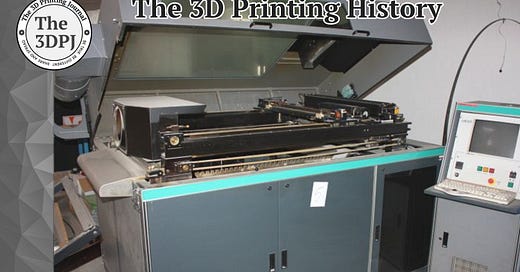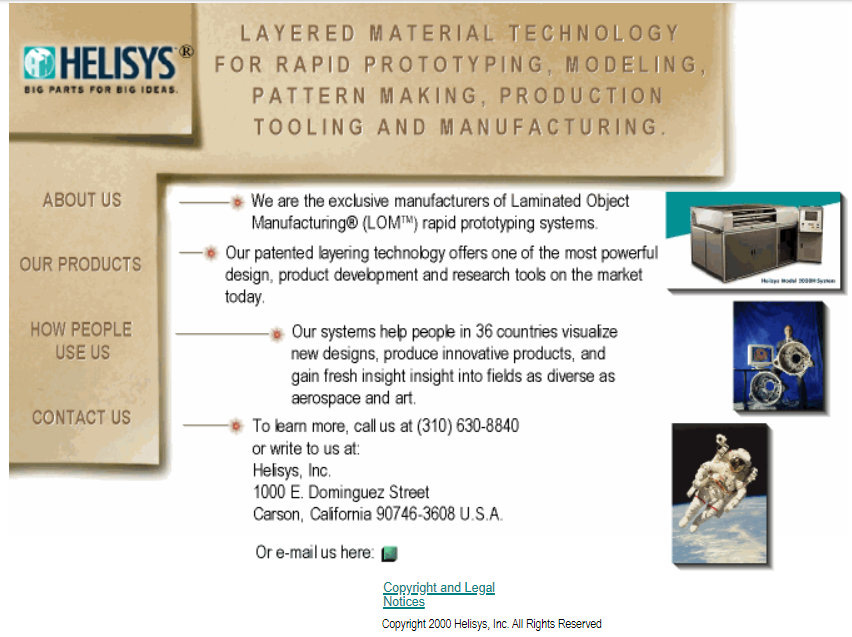11-03-2000: Helisys ceased operations
It was one of the first AM companies on the market and the creator of the LOM (Laminated Object Manufacturing) technology
In November 2000, the American company Helisys ended its operations. That same month, Helisys founder and LOM inventor Michael Feygin announced the formation of Cubic Technologies. The new company absorbed most of Helisys's assets; however, its career was similarly brief, and it also closed its doors in 2005. The LOM technology itself has been adopted by several companies over the years but still has yet to break into the mainstream.
This entry is somewhat unique in my series, as it’s the first time I don’t know the exact date of an event. All available sources consistently point to November 2000, but the exact day is impossible to determine without specific eyewitness accounts. Nevertheless, it’s significant enough that I decided to document it. Also, nothing noteworthy happened on November 3, so we’ll consider this day the symbolic end of Helisys (until proven otherwise!).
Helisys Inc. was established in 1990 in California. It was a pioneer in developing Laminated Object Manufacturing (LOM)—a unique 3D printing technology that combines both additive and subtractive manufacturing techniques. Unlike other additive manufacturing methods that directly deposit raw material layer by layer, LOM builds objects by cutting and stacking sheets of material, such as paper, plastic, or composites, into precise layers, which are then adhered together to create the final object. This process allowed Helisys to provide a more affordable and efficient solution for creating large-scale prototypes, mainly for industrial design and engineering.
Despite advantages like lower material costs and the ability to produce sizable prototypes, LOM had limitations, including a visible layered texture and limited material compatibility. Additionally, when using foil materials, models tended to shrink significantly, and there were known cases of ignition. As 3D printing technology advanced, other methods offering greater precision and material versatility gained popularity, leading Helisys to eventually close in November 2000. According to the Wohlers Report, the company had sold 375 machines worldwide by that time (early that year it even signed a distribution agreement in Japan).
Cubic Technologies, which emerged to carry forward Helisys’s LOM technology, aimed to continue and refine the LOM process. However, it faced similar challenges in a market where other 3D printing technologies were rapidly evolving, offering more versatility and precision, making it challenging for LOM to compete effectively long-term. Although no precise date is known, the company’s closure occurred in 2005.
LOM is a fascinating method that never gained widespread popularity. After Helisys/Cubic Technologies, it was first developed further by the Irish company Mcor (now defunct) and is currently being advanced by the American company Impossible Objects. Each successive iteration has differed significantly in its features (Mcor focused on color, IO emphasizes carbon fiber sheets), but it still remains a niche AM technology.





